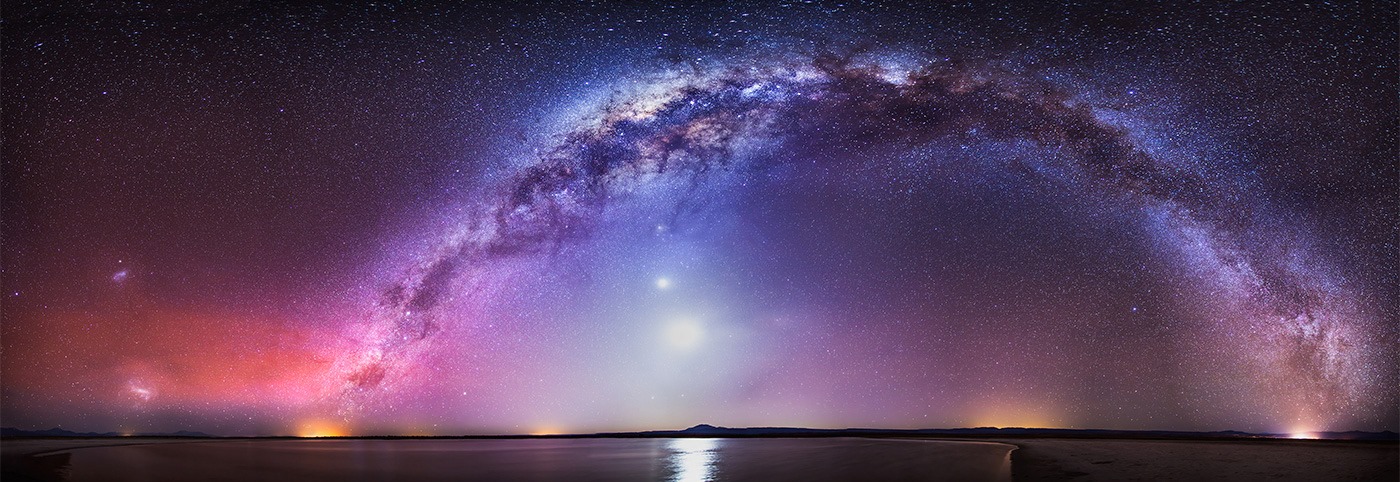(Untitled)
If you could stand on Titan — what would you see? The featured color view from Titan gazes across an unfamiliar and distant landscape on Saturn’s largest moon. The scene […]

If you could stand on Titan — what would you see? The featured color view from Titan gazes across an unfamiliar and distant landscape on Saturn’s largest moon. The scene […]
This is not a screen from a video game. Nestled below the tree-line, the small mountain church does look like it might be hiding from Moon though. In the well-composed […]
NGC 6888, also known as the Crescent Nebula, is a about 25 light-years across, a cosmic bubble blown by winds from its central, massive star. This deep telescopic image includes […]
Big, beautiful spiral galaxy NGC 1055 is a dominant member of a small galaxy group a mere 60 million light-years away toward the aquatically intimidating constellation Cetus. Seen edge-on, the […]
How far can you see? Everything you can see, and everything you could possibly see, right now, assuming your eyes could detect all types of radiations around you — is […]
Seen to the left of Saturn’s banded planetary disk, small icy moons Dione and Rhea are caught passing in front of the gas giant’s extensive ring system in this sharp […]
Now outbound after its perihelion or closest approach to the Sun on October 29, Comet 3I/ATLAS is only the third known interstellar object to pass through our fair Solar System. […]
What has happened to Comet Lemmon’s tail? The answer is blowing in the wind — the wind from the Sun in this case. This continuous outflow of charged particles from […]
If this is Saturn, where are the rings? When Saturn’s “appendages” disappeared in 1612, Galileo did not understand why. Later that century, it became understood that Saturn’s unusual protrusions were […]
This magnificent extragalactic skyscape looks toward the Andromeda Galaxy, the closest large spiral galaxy to the Milky Way. It also accomplishes a Messier catalog trifecta by including Andromeda, cataloged as […]